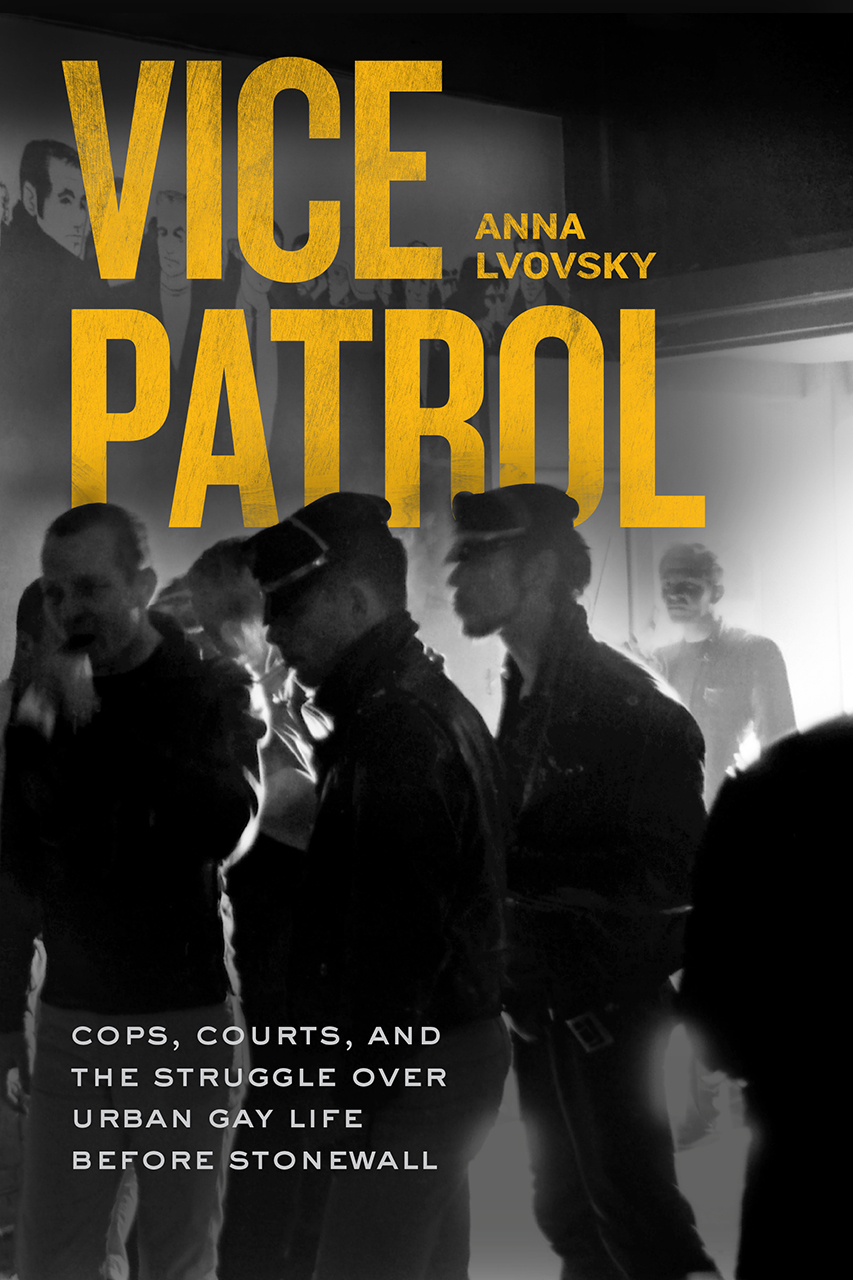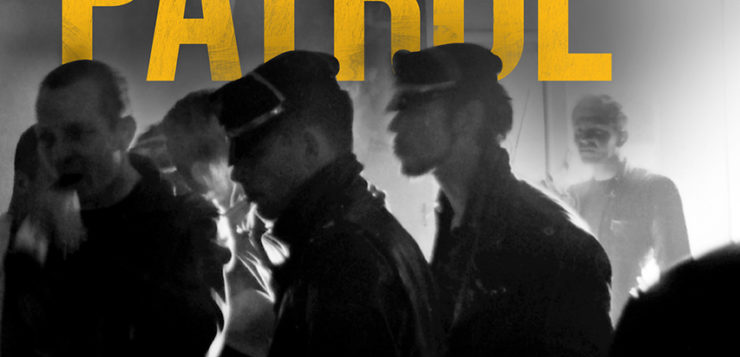 VICE PATROL
VICE PATROL
Cops, Courts, and the Struggle over Urban Gay Life before Stonewall
by Anna Lvovsky
U. of Chicago Press. 360 pages, $35.
IN THIS deeply researched book, Harvard law professor Anna Lvovsky presents an illuminating and complex history of anti-homosexual vice raids in mid-20th-century America. With precise details and careful analysis, Vice Patrol tells a fascinating story about how the policing of homosexuality from the 1940s to the 1960s was far more contradictory and contested than we might think, and how courts of law played a crucial role in the emerging understanding and visibility of LGBT life.
The years after World War II witnessed new and “progressive” theories of homosexuality as a developmental rather than a biological condition. Kinsey’s research challenged prevailing theories that homosexuals constituted a small, mentally ill class of people. It was amid these shifting ideas that the early homophile groups debated the political realities of homosexuals as a social minority. Drawing on a wealth of documents from trial records, prosecutor notes, judges’ commentaries, and secondary interviews with detectives, Lvovsky situates the vice patrols and court cases within this cultural context.
Organized into three key areas of regulation and policing—bars and liquor laws, decoy surveillance in public spaces, and undercover surveillance of public restrooms—Lvovsky shows how the courtroom manifested competing ideologies and institutional concerns around the policing of sexuality. Her research reveals that the courtroom was both a microcosm of larger social concerns and a place where the contradictions and complexities around the issue of homosexuality were aired.
In other cases, bar owners complained that they couldn’t identify the homosexuals in their bar. “How do I know which one is a degenerate?” one owner complained, adding: “I can’t go up and ask a man if he is … a fairy.” For their part, the liquor board agents would testify that they could indeed spot stereotypical effete mannerisms in gay men or masculine ones in lesbians. These debates about one’s ability to single out a homosexual threw into question the cultural assumptions about homosexuality itself. For some judges, the arguments of the agents were increasingly unconvincing. The irony, as Lvovsky shows, is that as these debates played out, liquor boards often held paradoxical arguments. On the one hand, agents claimed a specialized skill at identifying homosexuals. On the other, as Lvovsky writes, they advanced “the presumption that anyone, liquor agent and bartender alike, could recognize homosexual men or women on sight.” It was a contradiction that would play out again and again in the courts.
While defense attorneys increasingly drew on medical experts, the police themselves were becoming experts about the homosexual world. In one striking chapter, Lvovsky details the rise of what she calls “ethnographic policing.” As police departments in the postwar years fostered a more professional image of a well-trained force with specialized knowledge of criminal subcultures, anti-gay vice squads received an education in the dress, manners, vocabulary, and cruising behaviors of their prey. Manuals such as “Vice Control in California” and the infamous “Homosexuality and Citizenship in Florida” (with its erotic front cover of two shirtless men kissing) informed readers that the homosexual world was “replete with its own language [and]customs.” While officers were trained in the dress and subcultural vernaculars of gay life, some immersed themselves fully, “camping it up” so as to provoke suspects and encourage a sexual solicitation or advance, which would result in arrests. Lvovsky is assuming here that the police squads did not in fact include closeted homosexuals, though the opposite is an intriguing possibility.
Such undercover efforts were meant to infiltrate gay-friendly bars and public cruising areas. But, as Lvovsky notes, the Mattachine Society of New York warned its readers in the 1960s that it doesn’t matter how “queer” someone may look, anyone who tries to pick up a gay man in public “could possibly be a disguised police officer.”
The bigger challenge for vice cops came not in bars or cruising areas but in the courtroom. Police expertise about queer subcultures had other problems in the courtroom as well. Going undercover to entice men to make a sexual advance increasingly had the odor of entrapment for many judges. Remarks Lvovsky: “[D]epicting officers as experts at the controversial task of eliciting solicitations fed a defense strategy of decrying manipulative decoy tactics. … [C]lever prosecutors did their best to avoid it.”
In a Greenwich Village case in the 1960s, three defendants claimed that the vice cop, who had a very successful record of arrests, invited their advances, signaling an interest that was “designed to invite sexual overtures,” which the men made inside the bar. Once outside, all three were arrested. While the defendants were ultimately convicted of disorderly conduct, the case was not unusual in how defendants pushed back against the police efforts, seeding doubts in judges and juries about the methods that vice cops used to induce the men to commit a crime.
By the early 1960s, the police had devised more clandestine forms of surveillance in men’s rooms, situating police in ceiling crawl spaces or behind two-way mirrors to watch bathroom behaviors. Some police departments began using film cameras behind two-way mirrors to capture the action. These techniques were an expansion of the decoy practices, and they too presented judges with huge constitutional questions.
In a 1962 California case, the vice cop hid in an air vent and watched as the defendants engaged in oral sex in a restroom stall. In court, the defendant’s attorney forced the cop to detail all that he saw for the jury, including anatomical descriptions of the two men and the actions he witnessed. Ultimately, he argued that the case was not about policing homosexuality but about the defendants’ right to privacy. “Never in counsel’s experience,” he told the court, “has he encountered a more brazen invasion of human rights or a more callous effrontery to human dignity.” The case ultimately went to the California Supreme Court, which dismissed the charges as an assault on privacy, marking one of the first cases to question such tactics on privacy grounds.
Vice Patrol is a compelling and important book. It shows us how the diverse interests and competing claims about the policing of gay lives in the postwar years played out in the courts. It reminds us how the criminal justice system was deeply enmeshed in, and transformed by, the larger cultural struggles over the meaning of same-sex desire.
James Polchin is the author ofIndecent Advances: A Hidden History of True Crime and Prejudice Before Stonewall.






